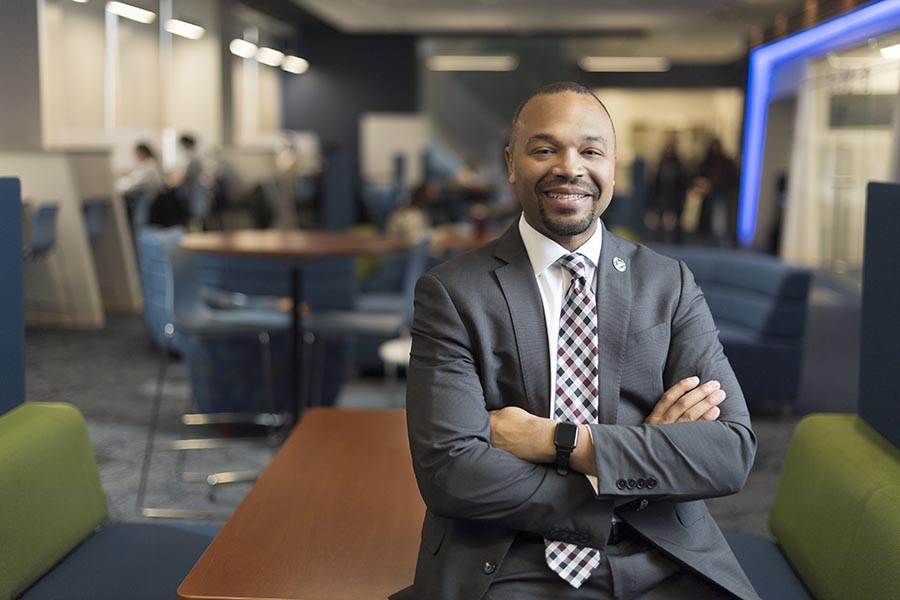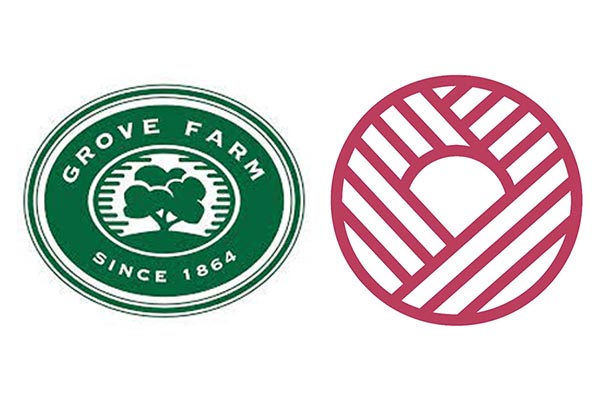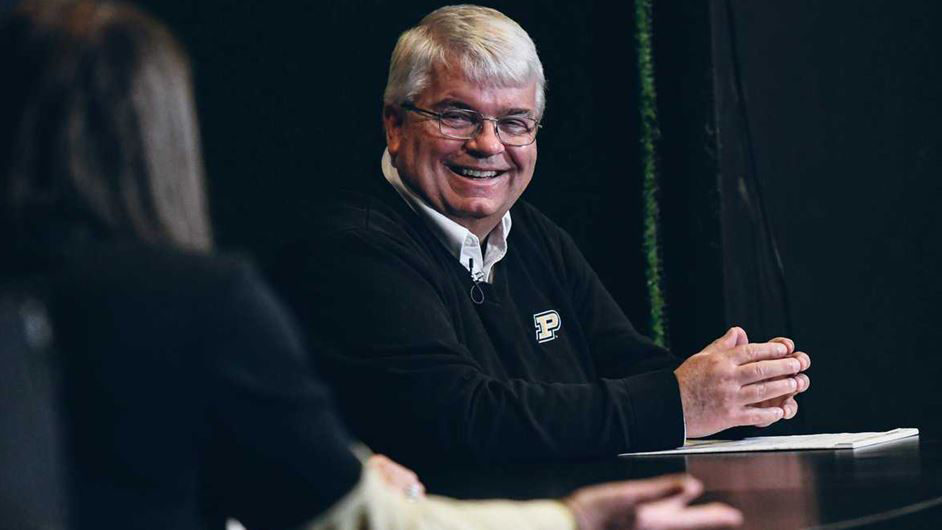Putting User Safety First - Meet 2014 MBA alumna Bhoomika Chilakamarri, manager of Trust & Safety at Google

Why did you choose to attend Purdue and the Krannert School?
I researched several universities, and the Krannert School of Management was among the top three of my list. The main reasons were its outstanding professors, quality students, collaborative culture, experiential learning, cultural diversity, flexible curriculum, reasonable tuition fees, and overall return on investment. I also liked the focus on leadership, analytics, and business strategy.
What are your favorite memories of your time as a student?
Krannert and Purdue's learning experience was enriching, fulfilling, and fun-filled. It was the first time I was among a close-knit group of students from over 35 countries, and I enjoyed the conversations around our personal and professional experiences.
I had an opportunity to work closely and collaborate with over 110 team members from Krannert and Purdue in my two years on campus. I learned a lot from each of them and improved my working style in the process. The professors helped me immensely with any questions I had, and I highly valued these interactions during class and office hours. I thoroughly enjoyed connecting with other students, executives, and professors in entrepreneurship. These conversations gave me more perspective.
I cherished my time working closely as a product lead with the Purdue University graduate program dean on an educational video game. The team consisted of students who were experts in their fields like engineering, UI/UX designing, behavioral science, etc. My other projects were with the Graduate Information Management and Analysis Center, which was very useful to get more hands-on experience on international projects like Project Saksham for women's education and empowerment.
Krannert career treks and company visits were also informative; I learned a lot about the inner workings of companies like Amazon, Google, Accenture, and several mid-sized enterprises. The Krannert Professional Development Center was so helpful in bringing in inspiring speakers, conducting elevator pitch sessions, and helping with career development. Thanks to Krannert, I got an internship with Amazon during campus placements, which helped my career take off in the U.S. I joined Amazon full-time after my MBA. I later moved to Walmart and Meta (formerly Facebook) before joining Google.
Our MBA cohort had potlucks, happy hours, and cooking sessions to learn about different food types worldwide. We also watched movies together. During the Krannert Culture Fest, I sang and performed Bharatanatyam, an Indian classical dance form. Several others participated in displaying their talents from across the world. I also enjoyed the fun post-exams Krannert pub-crawling tradition to places like Harry's, Neon Cactus, Brothers, Where Else, Nine Irish Brothers, Bombay Hookah lounge, etc. The tailgating socials before the Purdue Boilermaker games were also fun.
How did Purdue and Krannert prepare you for your career?
Purdue and Krannert provided me with good cultural awareness through formal and informal sessions and opportunities to interact regularly with classmates from diverse backgrounds. I learned to empathize more and enjoyed the culture of diversity and inclusivity. The analytical focus was excellent and prepared me to make sound data-driven decisions and understand any assumptions, potential biases, and constraints in the process. Experiential learning and the focus on the practical application of knowledge was beneficial. Time management, which I struggled with initially, was another thing that I learned while I was at Krannert.
What led you to pursue a career in IT?
I have a technical and entrepreneurial background, and Krannert helped me further my understanding of operations, strategy, product focus, and the bigger picture of business management. I have been a power user of several products and empathize greatly with customers. This allowed me to pursue a career in customer service at Amazon and then move to Walmart in the customer experience area. Later, I landed a role at Meta/Facebook in building what is currently the Meta Reality Lab with 10k+ employees. I was among the early members and helped launch the first in-house-built hardware products with augmented reality features, Portal and Portal Plus. I worked on end-to-end content and customer experience, built chatbots, customized help centers, user journey flows, and out-of-box experiences. After the Cambridge Analytica incident hit the company, I got an opportunity to learn more about trust and safety work and how essential it is to any business. I joined Google in Trust & Safety, which works to build user trust and product safety. This is an emerging field, very fulfilling, and can get very challenging.
How are women contributing to STEM fields typically dominated by men?
Women have been historically contributing to STEM fields. For example, Ada Lovelace was the first computer programmer in the world and developed a vision of the capability of computers to go beyond mere calculating or number-crunching, while many others focused only on the basic capabilities. Talent always appreciates talent. The men who designed the programming language Ada named it after Ada Lovelace.
Some of the women's core contributions to STEM might not be felt until a few decades after the invention. For example, Hedy Lamarr, an actress, invented frequency-hopping spread spectrum technology, which is the fundamental technology that has enabled mobile phones and data. Qualcomm's code-division multiple access (CDMA) cell phone technology is based on this, decades after the invention. Similarly, the recent and significant contributions to gene editing using CRISPR invented by 2010 Nobel Prize-winner Jennifer Doudna may become pervasive and fundamental to medical technology in a few decades.
At most of the companies where I worked, I have seen women excel in several fields like core engineering, data analysis, product development, and technical program management. Women have also taken up several leadership roles in STEM fields and are well respected by their peers. I feel it is never too late to learn anything new. It is crucial to have a passion, interest, and curiosity to understand the way science and technology can enhance our lives. I have personally volunteered to teach computer courses and technical applications to women from different backgrounds interested in and committed to learning. Women should tenaciously pursue their field irrespective of whether it is male dominated or not.
What is your current role at Google and what does it entail?
I lead a team of managers, product owners, and analysts at Google focusing on user trust and product safety across augmented reality (AR), virtual reality (VR), lens, search, hardware, and assistant. Taking a safety-first approach is important as we confront various challenges in these emerging areas. I love my work as it helps me proactively think about user safety, discuss potential harm with policy, product, UX, and engineering teams, consider proactive and reactive ways to reduce abuse, and make the solutions scalable.
I work closely with product teams on cross-product solutions and feel it is essential to implement safety efforts into product design. That includes things like designing mitigations that help improve situational awareness so that a user's vision isn't obscured when AR objects are overlaid on top of the real world, potentially avoiding accidents; ensuring operating systems and application frameworks include digital-wellbeing tools such as screen-time awareness and parental controls; and implementing other safety and anti-abuse guiding principles.
I’m very proud of our trust and safety work on cutting-edge product features. One area is AR Search, which is for searching things visually and seeing life-size 3D objects like chemical bonds or Naomi Osaka playing tennis. Another is Lens, which can translate and understand text in the physical world in context and read it out loud if needed. As part of my work, I partner closely with product teams on cross-product solutions and other proactive protections to keep users safe. It is great to see the enthusiasm from our users on these product demos during Google I/O, the Consumer Electronics Show, Mobile World Congress, etc.
How important is data analytics to your job and industry?
Our team builds analytical tools, automation pipelines, machine learning classifiers, and proactive signals detection platforms. We also use data to identify potential harm, privacy concerns, and abuse issues. It is essential to filter out noise from signals and use the appropriate analytical methods to get the right insights. At Krannert, I received an SAS certificate in Business Analytics for completing courses such as Six Sigma, data mining, core business analytics, optimizations, and spreadsheet modeling. Taking the appropriate courses in B-school can go a long way in the future.
What advice do you have for current or prospective students?
At Purdue and Krannert, there are plenty of learning opportunities. Purdue is a great place to proactively start building a robust professional network. Take complete ownership of your career. Find a great mentor, set goals, and develop a customized plan for yourself. Be flexible and reevaluate the goals as needed. Participate in student clubs, case competitions, and experiential learning. Try choosing new team members for every course or project to truly leverage the diversity of the students. When choosing a career path, figure out your risk appetite to build a great generalist versus specialized portfolio. Take enough time for your well-being and enjoy the entire process.




